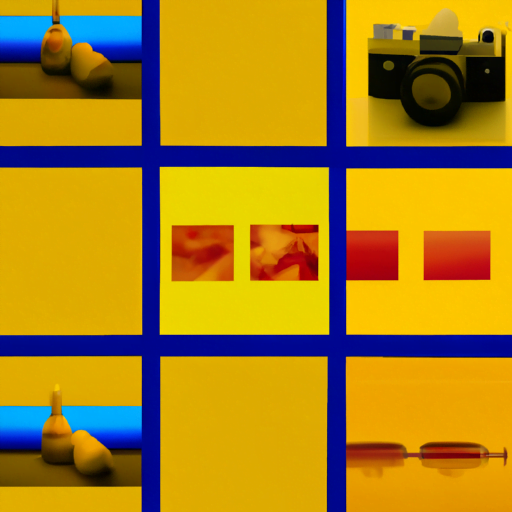
-
Table of Contents
- Designing for Multisensory Experiences: Engaging All Senses
- The Power of Multisensory Design
- Design Principles for Multisensory Experiences
- 1. Understand the target audience
- 2. Use visual elements strategically
- 3. Incorporate sound and music
- 4. Engage the sense of touch
- 5. Explore scent and taste
- Case Studies: Successful Multisensory Design
- 1. The Museum of Ice Cream
- 2. Sonos Store
Designing for Multisensory Experiences: Engaging All Senses

In today’s digital age, where screens dominate our attention, designing for multisensory experiences has become increasingly important. Engaging all the senses in design can create more immersive and memorable experiences for users. By incorporating sight, sound, touch, smell, and taste, designers can tap into the full potential of human perception and create experiences that are not only visually appealing but also emotionally and physically engaging. In this article, we will explore the importance of designing for multisensory experiences and provide valuable insights on how to achieve it.
The Power of Multisensory Design
Our senses play a crucial role in how we perceive and interact with the world around us. By designing for multisensory experiences, we can tap into the power of these senses to create more impactful and memorable designs. Here are some key reasons why multisensory design is important:
- Enhanced user engagement: Engaging multiple senses simultaneously can captivate users’ attention and create a deeper level of engagement. When users are actively involved in an experience, they are more likely to remember it and form a positive association with the brand or product.
- Emotional connection: Our senses have a strong influence on our emotions. By designing for multisensory experiences, designers can evoke specific emotions and create a more profound connection with users. For example, a warm and cozy atmosphere in a coffee shop can make customers feel comfortable and relaxed.
- Improved information retention: Studies have shown that multisensory experiences can enhance information retention. When information is presented through multiple senses, it becomes more memorable and easier to recall. This can be particularly useful in educational or training contexts.
- Accessibility and inclusivity: Designing for multisensory experiences can also improve accessibility and inclusivity. By engaging multiple senses, designers can cater to a wider range of users, including those with visual or hearing impairments. For example, providing audio descriptions for visual content can make it accessible to visually impaired users.
Design Principles for Multisensory Experiences
Creating effective multisensory experiences requires a thoughtful approach and an understanding of how different senses can be integrated into the design. Here are some design principles to consider:
1. Understand the target audience
Before designing for multisensory experiences, it is essential to understand the target audience and their preferences. Different demographics may respond differently to sensory stimuli. For example, younger audiences may be more receptive to vibrant colors and energetic sounds, while older audiences may prefer more subtle and calming experiences.
2. Use visual elements strategically
Visual elements play a significant role in multisensory design. Colors, shapes, and typography can evoke specific emotions and set the tone for the experience. Consider the following strategies:
- Choose colors that align with the desired emotional response. For example, warm colors like red and orange can create a sense of excitement, while cool colors like blue and green can evoke calmness.
- Use visual hierarchy to guide users’ attention. By emphasizing important elements through size, contrast, or placement, designers can direct users’ focus and enhance the overall experience.
- Integrate motion and animation to add dynamism and create a sense of interactivity. However, be mindful of not overwhelming users with excessive animations.
3. Incorporate sound and music
Sound and music can greatly enhance the multisensory experience. Consider the following approaches:
- Choose appropriate sound effects that complement the visual elements and reinforce the desired emotional response. For example, a subtle “click” sound when a button is pressed can provide feedback and make the interaction more satisfying.
- Integrate background music or ambient sounds to create a specific atmosphere. For example, a spa website could play soft and soothing music to evoke relaxation.
- Provide options for users to control the audio experience. Some users may prefer to mute or adjust the volume according to their preferences.
4. Engage the sense of touch
The sense of touch can add a tactile dimension to the experience and create a stronger connection with users. Consider the following techniques:
- Use different textures and materials in physical products or digital interfaces to provide a tactile experience. For example, a smartphone with a textured back cover can feel more premium and comfortable to hold.
- Incorporate haptic feedback to provide physical feedback during interactions. For example, a subtle vibration when a button is pressed can enhance the sense of control and make the experience more satisfying.
- Consider ergonomics and physical comfort when designing physical products. A well-designed chair, for instance, should not only look visually appealing but also provide a comfortable seating experience.
5. Explore scent and taste
While scent and taste may not be applicable to all design contexts, they can be powerful tools in certain industries. Consider the following possibilities:
- Incorporate scents in retail environments to create a specific ambiance. For example, a bakery could use the smell of freshly baked bread to entice customers and create a warm and inviting atmosphere.
- In the food and beverage industry, consider how taste and presentation can enhance the overall experience. For example, a visually appealing dish with a harmonious combination of flavors can create a memorable dining experience.
- Be mindful of potential allergies or sensitivities when using scents or flavors. Provide alternatives or options for users who may have specific dietary restrictions or preferences.
Case Studies: Successful Multisensory Design
Let’s explore some real-world examples of successful multisensory design:
1. The Museum of Ice Cream
The Museum of Ice Cream is an interactive art installation that combines visual, auditory, and tactile elements to create a whimsical and immersive experience. Visitors can explore various rooms filled with vibrant colors, interactive exhibits, and even edible treats. The museum engages all the senses, allowing visitors to taste ice cream, touch different textures, and take photos in visually stunning environments. This multisensory approach has made the museum a popular destination for both children and adults.
2. Sonos Store
The Sonos Store is a retail space designed to showcase the brand’s audio products. The store incorporates carefully curated music playlists, immersive soundscapes, and interactive displays to create a multisensory experience for visitors. Customers can not only see and touch the products but also listen to high-quality audio in different room setups. By engaging the senses of sight and sound, Sonos creates an environment that allows customers to fully experience the
